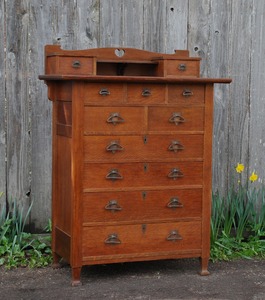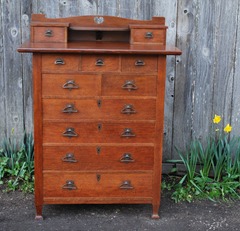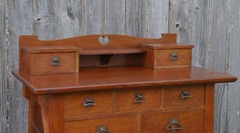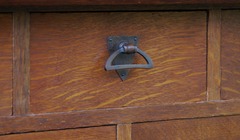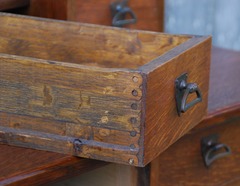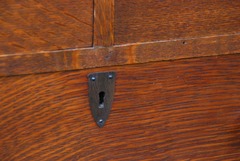REPRODUCTIONS
ANTIQUES

Specializing in the works of Rohlfs, Roycroft, Harvey Ellis, Gustav Stickley, D`Arcy Gaw, Dirk Van Erp, Limbert, Greene & Greene and L. &. J.G. Stickley , Stickley Brothers and Charles Stickley. Custom reproductions and antiques.
Unique Arts and Crafts period eleven drawer highboy dresser chest with Macmurdo feet and heart cut out design Stickley era
Unique Arts and Crafts period eleven drawer highboy dresser/chest with Macmurdo feet and heart cut-out design in the back-splash joining two small drawers above the top with a shelf supported by to shaped corels. Quality original hardware, fine original finish with minor touch up. Overall excellent condition, the case is very tight and the drawers all slide smoothly. Many of the elements of this chest, such as the shaped Macmurdo feet, heart cut out design, multiple drawers, corbels, quartered oak on the drawer sides and four of the eleven drawers with functional locks are significantly more labor intensive and costly to produce.
| Product ID | : #1500 |
|
|
Click images for larger versions
